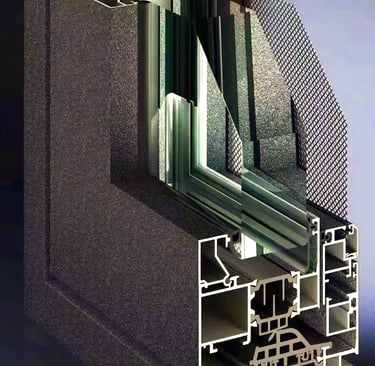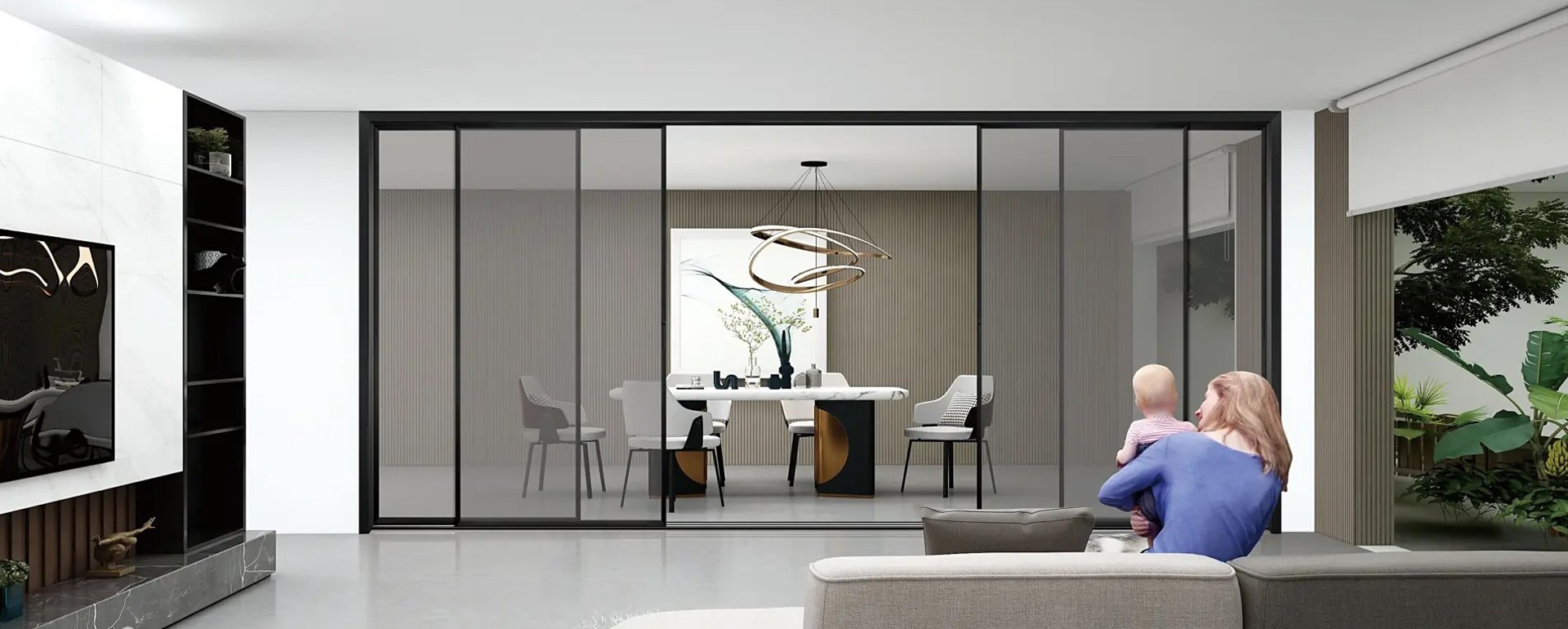Application of Aluminum Windows and Doors in Modern Architecture: Environmental Protection and Technological Innovation
Amidst intensifying global climate change and the advancement of carbon peaking and neutrality goals, the construction industry is undergoing a profound transformation from high-energy consumption to green and low-carbon development. As a core component of building envelopes, aluminum windows and doors play a pivotal role in determining building energy efficiency and ecological sustainability. This paper systematically analyzes the environmental applications of aluminum windows and doors in material innovation, energy-saving design, and lifecycle management, while exploring future development directions through the lens of modern architectural theory and technological practice.
10/11/20252 min read
I. Environmental Advantages and Technological Breakthroughs of Aluminum Windows and Doors
Material Characteristics and Resource Circularity
Aluminum exhibits exceptional lightweight properties (density: 1/3 of steel), high strength, and corrosion resistance, with 100% recyclability. The production of recycled aluminum consumes only 5% of the energy required for primary aluminum, significantly reducing carbon emissions. For instance, thermal break aluminum profiles reduce thermal conductivity (U-value) to below 1.8 W/m²·K through internal insulating strips, achieving 30% energy savings compared to traditional plastic windows.
Integrated Energy-Saving Technologies
Optimized Thermal Insulation: The adoption of Low-E coated glass and argon-filled technology reduces overall window heat transfer coefficient to 1.2 W/(m²·K), cutting HVAC energy consumption by 40%–60%.
Enhanced Airtightness and Watertightness: Multi-layer sealing strips and pressure-equalized cavity designs control air leakage rates below 0.6 m³/h·m², effectively blocking thermal bridging.
Smart Regulation Systems: Integrated light and temperature sensors enable automatic adjustment of shading louvers, achieving dynamic energy efficiency.
II. Implementation Pathways in Green Architecture
Low-Carbon Integration in Design
Climate-Adaptive Performance Matching: Selecting profile thickness and glass configurations based on regional climate zones (e.g., triple-glazed units in cold regions, optimized drainage in humid areas).
Building-Envelope Integration: BIM-based simulations optimize thermal bridge effects, minimizing heat loss through node refinements.
Green Transition in Production and Construction
Clean Manufacturing: CNC machining and water-based coatings reduce waste and volatile organic compound (VOC) emissions.
Prefabricated Installation: Pre-assembled sealing components and standardized connectors shorten construction time by 30% and lower on-site pollution.
Sustainable Operations and Maintenance
Smart Monitoring: Embedded sensors track real-time airtightness and condensation, enabling proactive performance maintenance.
Extended Lifespan: Regular maintenance of sealing strips and surface coatings prolongs service life to over 20 years, reducing replacement frequency.


III. Case Studies and Performance Analysis
Shanghai Jiali Project
Employing aluminum-clad wood composite windows with Low-E insulating glass and thermal break structures, the building achieved a 28% reduction in heating energy consumption, indoor noise levels ≤35 dB, and LEED Gold certification.
Beijing Changyang Peninsula Energy-Efficient Project
Utilizing ultra-low-energy windows (K-value ≤0.8 W/m²·K) combined with photovoltaic integration, the project reduced annual carbon emissions by 12 tons per unit, setting a benchmark for cold-climate green buildings.
IV. Future Trends and Challenges
Technological Innovations
Bio-Based Composites: Developing bamboo fiber-reinforced aluminum profiles to further lower carbon footprints.
Self-Healing Coatings: Smart sealing materials that expand upon water contact to enhance durability.
Standardization and Market Challenges
Unified Carbon Accounting: Establishing standardized methods for calculating window carbon emissions and integrating quantitative metrics into green building certifications.
Cost Barriers: High-performance aluminum windows currently cost 20%–30% more than conventional alternatives. Scaling production and policy subsidies are critical to market penetration.



Get in Touch With Us
Partner with QTA Aluminium for wholesale and OEM door & window solutions. Contact us directly to discuss your project needs.
© 2025. All rights reserved.
